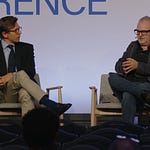Green Flag Ventures is building a thesis in plain sight, in a place most investors still view through old lenses. The fund backs product companies born in Ukraine, in defense, dual use, AI, and cyber. Their dual use rule is strict, clear markets in civil, military, and commercial, not hope, not someday.
Both partners, Deborah Fairlamb and Justin Zeefe, argue that today’s battlefield has changed in kind, not by degrees. Electronic warfare is thick. GPS can drop out. Phones near the front can get you targeted in minutes. Drones fill the air and crawl the ground, but the deeper shift is invisible, signals and code. Western gear designed for older assumptions often fails here, not because it is bad, but because it was not built for this fight.
This shift breaks the old model of a few giant systems facing a few giant systems. The new model is thousands of small, attritable units, cheap enough to lose, smart enough to adapt, driven by software that updates fast. If you take that seriously, you stop chasing unicorn myths and start planning real exits. Green Flag talks about dragons, not unicorns. Dragons are companies built for an M&A outcome, with clear buyers who need what they have. You can still swing for upside, but you keep your eye on the exit. That is the job.
Their process follows that logic. They do not fund hopes and prototypes. They invest when the tech readiness level is six or higher. These companies have revenue, usually recurring. They are validated in the field, then reviewed by outside experts from places like the Air Force, NASA, and RUSI, to judge fit with Western programs. They also handle risk the right way. Every company is domiciled in the EU or the US, in a jurisdiction chosen for the IP and export controls it will face.
The market is maturing fast. In Kyiv, they helped extend a seed deal into a Series A, fifteen million dollars led from New York, the largest VC round for a Ukrainian defense tech firm to date. A week earlier they announced another investment. The pipeline is full because the talent base did not appear overnight. Before the full-scale invasion, Ukraine’s tech sector grew for years, and much of that talent has turned to defense with a sober aim, win the war, then sell into allied markets.
Fairlamb is blunt about where the real leverage is. They do not back drone airframes or ground frames. Those will become commodity goods. The value sits in parts and software, navigation, swarming, resilient links, antennas you can swap, code you can patch, and the data itself. Ukraine has collected video, audio, and movement data since 2014. With stronger vision and photo models, that corpus now trains tools that see patterns and guide action. If your product cannot be changed quickly, it will fail against Russia in two months. That is the bar.
Zeefe adds the investor’s hard truth. VCs and founders should talk openly about exits. You help companies by planning the path, who buys, why they buy, what the diligence will show. That is easier when you live with the problem. Fairlamb has been in Ukraine for nearly fifteen years. They speak with soldiers. They work with Brave1, the national defense tech program that routes promising teams through staff reviews across defense and digital agencies. You cannot parachute in and know what matters next week. You need to be present and you need to filter the artificial demand, like the appetite for more drones, from actual company value.
For US angels or VCs who ask how to invest, the answer is simple. Work with funds on the ground that can source, test, and de-risk. There are a few now, like MITS and Green Flag. Venture is not the only path. Roll-ups, PE plays, and other asset classes make sense for different kinds of firms. But if you want early stage in this space, talk to the people who sit with founders at the edge of the problem and who design for Western exits from day one.









